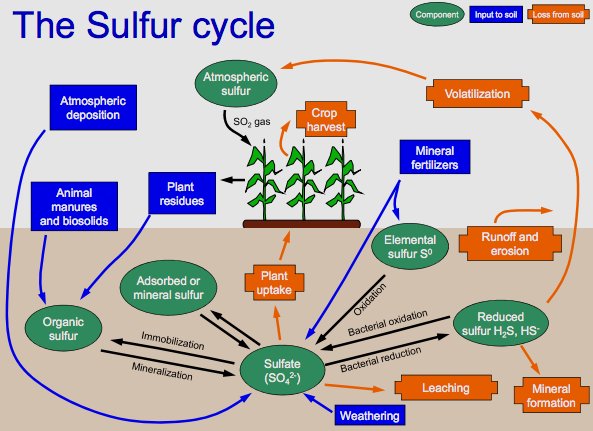Sulfur
Project Inspiration
This project was inspired by the following paper: Organosulfates in the Midwestern United States: Abundance, composition and stability
The Sulfur Cycle
The sulfur cycle describes how sulfur is transferred through water, rocks, and living systems. This cycle heavily relies upon the different oxidation states of sulfur.
Oxidative states of sulfur:
S2-: H2S, FeS, FeS2, CuS
S0: native, or elemental, sulfur
S2+: SO
S4+: SO2, sulfite (SO32-)
S6+: SO42- (H2SO4, CaSO4), SF6
The natural passageway of sulfur to the atmosphere is through sea spray. However, the primary anthropogenic cause of sulfur in the atmosphere is the burning of fossil fuels. When this sulfur is released into the atmosphere, it reacts with water to create sulfuric acid. This causes the pH of the water droplets in rain to become more acidic than usual and can damage natural systems.
Oxidation of Sulfur
Hydrothermal vents in the ocean floor emit hydrogen sulfide, which chemolithotropic bacteria use in conjunction with oxygen to create elemental sulfur or sulfate.
CO2 + 4H2S + O2 -> CH2O + 4S0 + 3H2O
CO2 + H2S + O2 + H2O -> CH2O + SO42- + 2H+
Sulfur Isotopes
Sulfur has 23 known isotopes, however, only four of them are stable. The stable isotopes of sulfur are: 32S (95.02%), 33S (0.75%), 34S (4.21%), and 36S (0.02%).
Relevant Papers
Effect of Acidity on Secondary Organic Aerosol Formation from Isoprene
Organosulfates in the Midwestern United States: Abundance, composition and stability
